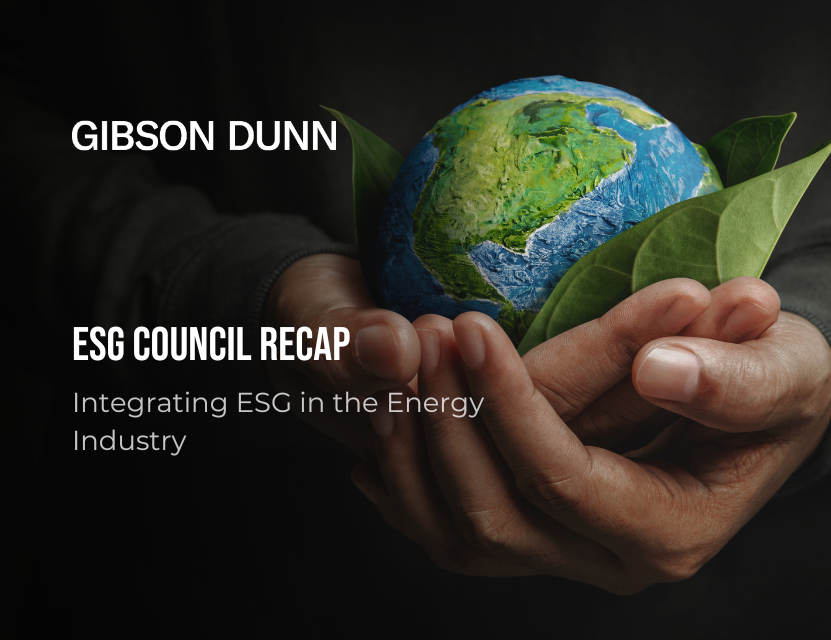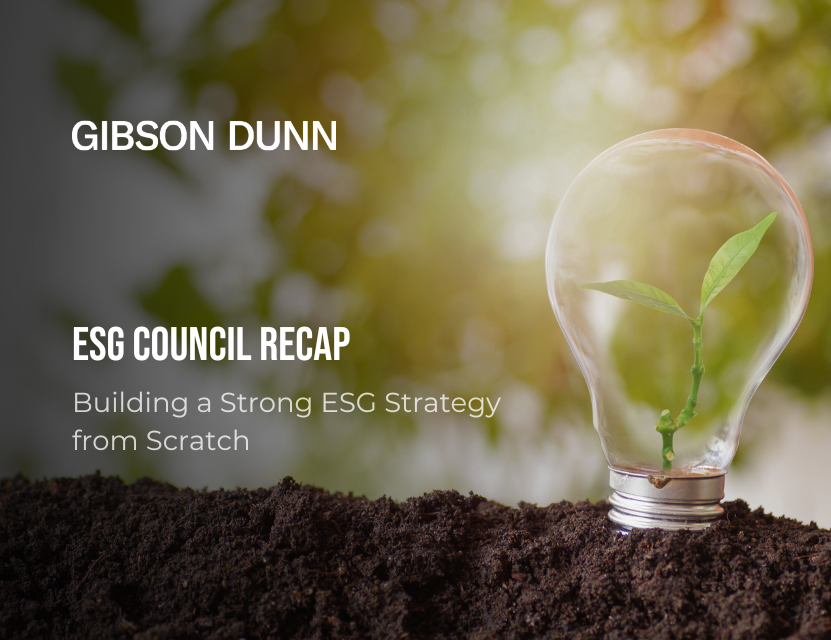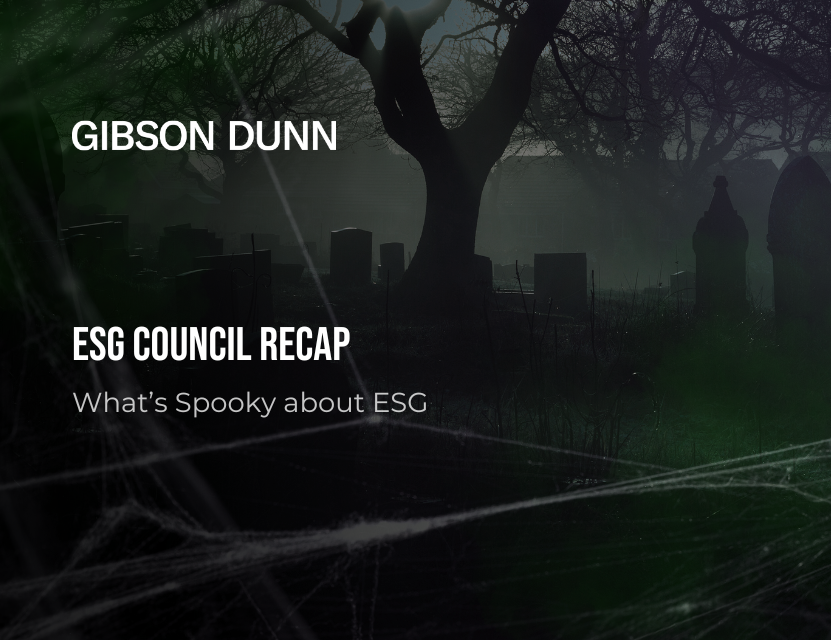“We build safe spaces like this one to make trusted connections and create thought leadership,” says Katie Mehnert, founder and CEO of ALLY Energy, as she opens the event.
The ESG Council’s Back-to-School Edition, sponsored by Gibson Dunn, gathers industry leaders to examine the evolution of ESG practices and the challenges organizations face today. The event focuses on how companies can embed ESG principles into their operations while navigating a complex regulatory landscape. The ESG Council introduced a poll to engage the audience and gather insights on the current state of ESG practices in their organizations. The poll asked participants about their company’s commitments, activities related to ESG, and how the political environment affects their culture. This interactive approach set the stage for a robust discussion, allowing speakers to tailor their insights based on the audience’s responses.
Mehnert explains that ALLY is developing an AI-powered tool to connect people with careers that align with their values and help companies find under-utilized talent. This new platform reduces the hiring time by matching candidates who fit the organization's culture. As the energy industry undergoes significant changes, ALLY focuses on bridging the gap between employers and talent pools, particularly in the ESG space.
Integrating Principles into Business Operations
“One big change is the focus on the practical application of ESG into business operations, partnerships, and value chains,” says Linda Brewer, CEO of T3 Strategies.
Brewer emphasizes that ESG is now deeply integrated into business processes, from supplier relationships to employee engagement. She points out that businesses increasingly recognize the operational and financial benefits of adopting ESG principles, using it as a lens for growth and efficiency. In her view, this shift is essential for companies aiming to balance community relations, employee management, and long-term success.
Evolving Language and Education in the Workplace
“We believe in solving problems through place-based learning and empowering students to address challenges in their communities,” shares Lisa Gianukos, Texas Program Director at the Children’s Environmental Literacy Foundation.
Gianukos reflects on the evolving language surrounding ESG, particularly in educational settings. She notes how terms like "environmental literacy" have become more accessible, allowing her foundation to engage schools and communities effectively. Her work guides students through real-world problem-solving, such as addressing safe sidewalk access and beautification. This hands-on approach fosters a deeper understanding of ESG among younger generations.
Managing ESG in a Politicized Climate
“The anti-ESG movement is not a death knell—it’s ESG growing up,” says Joanne Howard, a sustainability expert with over 20 years of experience, including her role as former Senior Vice President of Sustainability at Crescent Equity Partners.
Howard discusses the growing political pressure against ESG initiatives but argues that it is a necessary correction. She notes that the focus shifts from long-term, vague promises to more realistic, actionable goals. Howard also points out that while some companies pull back due to political pressure, others continue to push forward, focusing on short-term achievements that align with business objectives.
The Regulatory Landscape and Compliance Strategies
Speakers highlight the importance of proactively preparing for regulatory changes during the panel.
“After yet another busy year of new regulations, litigation, and ever-changing technology, we want to pause and see where we’ve been, where we’re headed, and why it matters,” says Cynthia Mabry, Partner at Gibson Dunn.
Mabry emphasizes the uncertainty around the SEC’s climate rules, advising companies to stay ahead of potential requirements. Brewer and Howard stress the need to incorporate ESG into company risk management frameworks so businesses can navigate the evolving regulatory landscape.
Key Challenges for the Future: 2025 and Beyond
Brewer remarks as she looks ahead to the top challenges, “The relationship between the organization and its supply chain, as well as with the community, is going to be a critical focus in the next few years.”
With 66% of participants coming from business or functional roles, many indicated their companies are experiencing moderate commitment shifts. Brewer and Howard identify emerging challenges such as biodiversity, mental health, and workforce flexibility as key areas for growth. Brewer underscores the significance of nurturing supplier and community relationships, suggesting these connections will be crucial for businesses aiming to thrive in an increasingly complex environment.
Addressing these evolving challenges will be key to maintaining resilience and long-term success as organizations look to the future.



